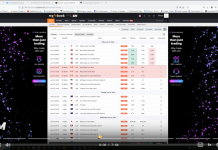 Thanksgiving Day in America traditionally sets the date of the commencement of the pre-Christmas – for many investors it is a signal for leaving the position and recording profits before the end of the year. This year’s Christmas period may, however, differ greatly from those of previous years – all thanks to the Fed’s monetary and EBC policy.
Thanksgiving Day in America traditionally sets the date of the commencement of the pre-Christmas – for many investors it is a signal for leaving the position and recording profits before the end of the year. This year’s Christmas period may, however, differ greatly from those of previous years – all thanks to the Fed’s monetary and EBC policy.
The Federal Reserve, according to investors, is preparing for the first interest rate hike this year, while the European Central Bank may amend the QE program.
Observing the current price on the EUR we can confidently say that the market is not prepared for more aggressive moves by the European Central Bank. All the time you can find a lot of room for surprises and stronger movements in the next few weeks. After the FOMC meeting scheduled for 14-15 December market activity will fall for standard Christmas levels, but until this time we should be careful.
The table below presents the three major currency pairs and their results on Thursday, Thanksgiving Day and Friday the second day of the holidays. Although European markets normally operate, Thursday is usually regarded as a very quiet day drawing low ranges trade. The exception to the rule, however, were the years 2007, 2008, 2010 and 2011 where EUR / USD and USD / JPY quotes presented much greater volatility. Today, the calendar is extremely quiet, so nothing should surprise the markets.

Thanksgiving and the day after in the last 10 years. Looking at the table it’s hard to notice any repetitive scheme – Change of trading during the Thanksgiving really depends on the market situation in a given year and the significance of published macro data. It dispel myth, however, that the American holiday calms down the markets
















